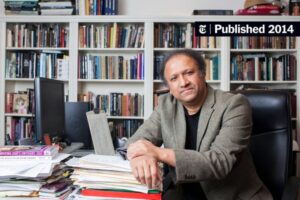In the contemporary discourse surrounding religion, Peter Boghossian’s work, “A Manual for Creating Atheists,” provides an elaborate examination of atheism and its antithetical relationship with deism. This comprehensive analysis will elucidate the philosophical and sociocultural framework of atheism, demystifying its ideological foundations and its arguments against deism. Boghossian’s text is not merely a critique but a clarion call for intellectual curiosity and rational inquiry, urging the reader to reassess well-entrenched beliefs.
To understand the essence of atheism as envisaged by Boghossian, one must first delineate its critical premises. Central to atheism is the rejection of theistic claims—specifically, the existence of a deity or deities. This rejection predicates a rationalist approach to knowledge and belief, positioning atheism as a manifestation of skepticism aligned with empirical verification. In stark contrast, deism espouses a belief in a creator who does not intervene in the universe post-creation. This divergence encapsulates a fundamental debate regarding the nature of existence and the source of moral authority.
Boghossian provocatively contends that belief in a deity lacks substantial epistemic justification. His argument pivots on the notion of faith as a cognitive pathology, wherein unfounded claims are accepted without scrutiny. Within this discourse, he proposes a radical reevaluation of how belief systems are propagated and assimilated. The manual meticulously outlines methodologies for fostering doubt and promoting critical thought—an initiative that aims to transcend the boundaries of mere disbelief, advocating for a proactive engagement in dialogues surrounding religion.
The crux of Boghossian’s thesis lies in his assertion that deism, while less dogmatic than traditional theism, can still perpetuate dogmatic thinking. Deism posits a rational creator, yet it inadvertently nurtures a sense of complacency regarding the scrutiny of belief. This is particularly salient in contemporary cultural practices that valorize tolerance towards diverse religious expressions, occasionally at the expense of critical inquiry. Boghossian’s manual thus serves as a tool for dissecting such complacency, encouraging adherents to question the validity of any belief system, including their own.
The promise of a paradigm shift predicated upon Boghossian’s insights fosters an exhilarating intellectual milieu. His approach reframes the conversation around atheism from mere denial to a constructive critique of theistic frameworks, especially deism. This reconfiguration is pivotal; it dismantles the often-unquestioned authority ascribed to religious beliefs and invites adherents and skeptics alike to engage in thoughtful discourse. By fostering an atmosphere of inquiry, Boghossian aims to galvanize a movement towards intellectual emancipation from dogma.
At its core, Boghossian’s methodology encapsulates the Socratic principle of elenchus—challenging individuals to critically assess their beliefs through engaging dialogues. In essence, the manual posits that by dismantling the unquestioned assumptions held by deists, a broader conversation can ensue. This conversation has the potential to foster a culture of responsibility where individuals take ownership of their beliefs, embracing a worldview that is both evidence-based and rationally coherent.
Moreover, the implications of such a discourse extend beyond philosophical boundaries, penetrating sociocultural constructs. In societies where religious institutions wield considerable influence, the promotion of skepticism can catalyze significant shifts in public policy and moral considerations. Boghossian envisions a future where atheism not only coexists with diverse belief systems but also challenges the predominance of unexamined faith with a well-founded articulation of reason and empiricism.
To navigate the intersection of atheism and deism, it is essential to understand the role of morality in these frameworks. Deists assert the existence of a moral creator; yet, critiques of this position often reveal a startling inconsistency. Boghossian uses this inconsistency to underscore the argument that morality does not necessitate a divine provenance. Instead, he elucidates how moral frameworks can arise from human experiences and societal evolution, independent of religious edicts. This assertion is pivotal, as it reinvigorates the discourse on morality, advocating for a secular ethical system grounded in humanistic principles rather than divine command.
Boghossian’s exegesis on the topic of faith merits significant attention, especially in a climate where religious dogma often clashes with rational inquiry. He postulates that faith—defined as belief without evidence—undermines the process of acquiring knowledge. Thus, the manual is not solely an anti-religious text; rather, it is an invitation to embark on a cognitive expedition where the tenets of faith are scrutinized vigorously. In challenging the status quo, the text posits that intellectual confidence can only emerge from a thorough vetting of beliefs.
The engagement with Boghossian’s manual embodies a broader trend towards the secularization of thought. As societies increasingly gravitate towards pluralism, the urgency to engage thoughtfully with the philosophical underpinnings of both atheism and deism escalates. This intellectual exploration fosters a climate conducive to dialogue, wherein individuals from diverse backgrounds can contribute to understanding the intricate tapestry of belief systems.
In conclusion, Peter Boghossian’s “A Manual for Creating Atheists” serves as a formidable exploration of atheism juxtaposed with deism. By challenging prevailing assumptions and advocating for rigorous inquiry, the manual proposes a transformative shift in perspective, piquing curiosity and igniting a commitment to rational discourse. The text exemplifies not merely a critique of religious belief but a broader call for intellectual agency in shaping beliefs grounded in reason rather than complacency. As the fabric of modern society continues to evolve, the arguments articulated within this work remain profoundly relevant, inviting further exploration into the intricate dynamics of belief and skepticism.


Leave a Comment